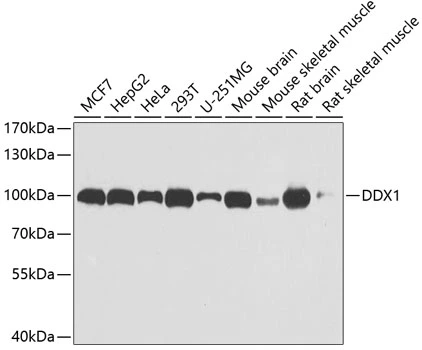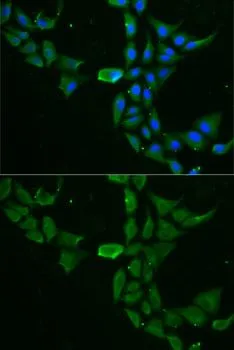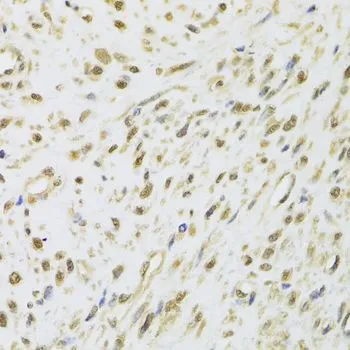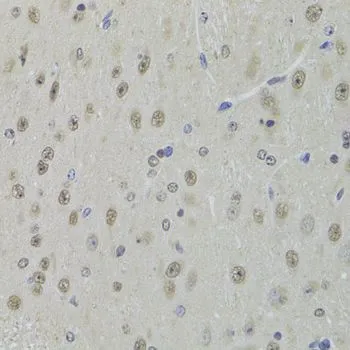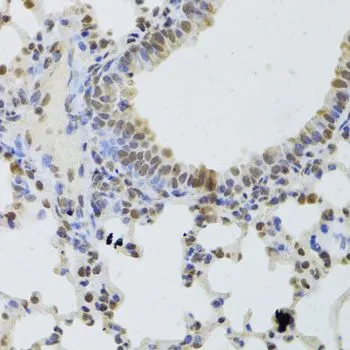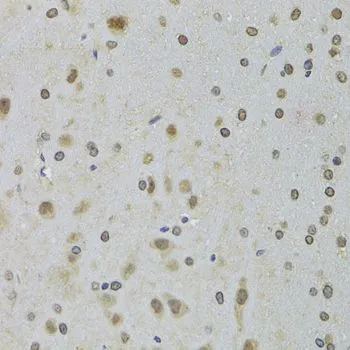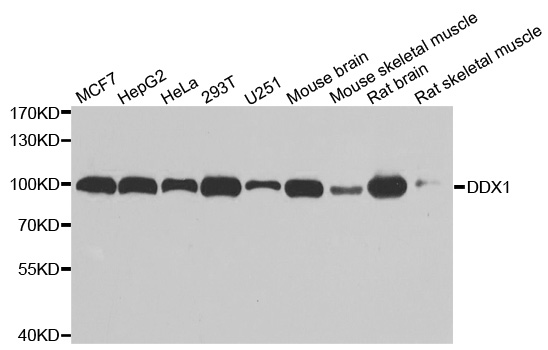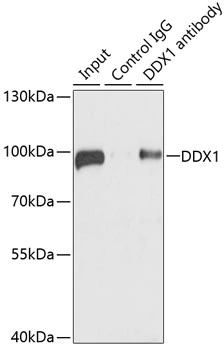
IP analysis of 293T cell lysate using GTX33149 DDX1 antibody. Antibody amount : 3microg / 100microg lysate Dilution : 1:1000
DDX1 antibody
GTX33149
ApplicationsImmunoFluorescence, ImmunoPrecipitation, Western Blot, ImmunoCytoChemistry, ImmunoHistoChemistry, ImmunoHistoChemistry Paraffin
Product group Antibodies
TargetDDX1
Overview
- SupplierGeneTex
- Product NameDDX1 antibody
- Delivery Days Customer9
- Application Supplier NoteWB: 1:500 - 1:2000. ICC/IF: 1:10 - 1:100. IHC-P: 1:50 - 1:200. IP: 1:20 - 1:50. *Optimal dilutions/concentrations should be determined by the researcher.Not tested in other applications.
- ApplicationsImmunoFluorescence, ImmunoPrecipitation, Western Blot, ImmunoCytoChemistry, ImmunoHistoChemistry, ImmunoHistoChemistry Paraffin
- CertificationResearch Use Only
- ClonalityPolyclonal
- ConjugateUnconjugated
- Gene ID1653
- Target nameDDX1
- Target descriptionDEAD-box helicase 1
- Target synonymsDBP-RB, UKVH5d, ATP-dependent RNA helicase DDX1, DEAD (Asp-Glu-Ala-Asp) box helicase 1, DEAD (Asp-Glu-Ala-Asp) box polypeptide 1, DEAD box polypeptide 1, DEAD box protein 1, DEAD box protein retinoblastoma, DEAD box-1, DEAD-box RNA helicase DDX1, DEAD/H (Asp-Glu-Ala-Asp/His) box polypeptide 1, DEAD/H-box helicase 1
- HostRabbit
- IsotypeIgG
- Protein IDQ92499
- Protein NameATP-dependent RNA helicase DDX1
- Scientific DescriptionDEAD box proteins, characterized by the conserved motif Asp-Glu-Ala-Asp (DEAD), are putative RNA helicases. They are implicated in a number of cellular processes involving alteration of RNA secondary structure such as translation initiation, nuclear and mitochondrial splicing, and ribosome and spliceosome assembly. Based on their distribution patterns, some members of this family are believed to be involved in embryogenesis, spermatogenesis, and cellular growth and division. This gene encodes a DEAD box protein of unknown function. It shows high transcription levels in 2 retinoblastoma cell lines and in tissues of neuroectodermal origin. [provided by RefSeq, Jul 2008]
- Storage Instruction-20°C or -80°C,2°C to 8°C
- UNSPSC12352203

